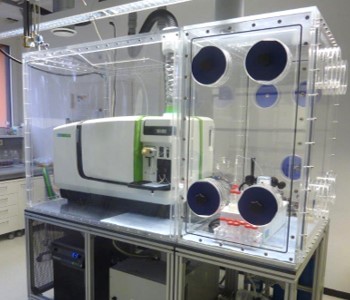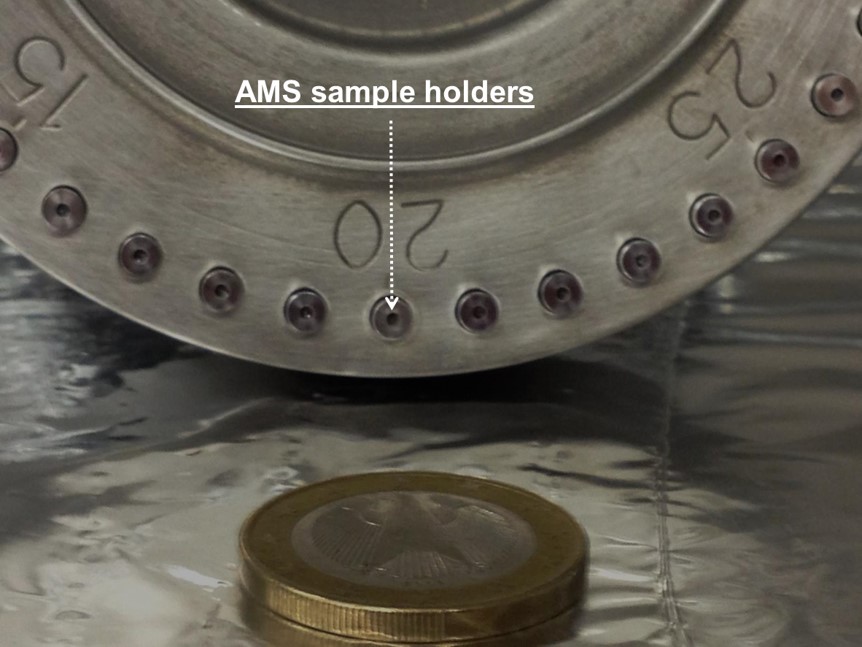Mass spectrometry
Triple-Quadrupole-ICP-MS
A triple quadrupole ICP-MS is a “tandem mass spectrometer” in which three quadrupoles Q1, Q2 and Q3 are arranged in a linear array between the inductively coupled plasma (ICP) and the detector. The two quadrupoles Q1 and Q3 are mass filters (selective) and the quadrupole Q2 (non-selective) is a collision/reaction cell (CRC). Ions of a certain mass can be selected before and after the CRC. A collision or specific reaction can be carried out in the CRC to separate interfering isobars from the analyte ions. This arrangement enables lower detection limits than single-quadrupole ICP-MS, especially for complex matrices in nuclear samples and for challenging isotopes (e.g. 129I).
Accelerator mass spectrometry (AMS)
For experiments requiring detection sensitivity at or below the fg levels, we apply and develop analytical methods using Accelerator Mass Spectrometry (AMS). This technique is not intended for routine analysis but it is dedicated to chosen studies addressing the geochemical and environmental behavior of rare, long-lived radionuclides, like 236U, 237Np, 239,240,242,244Pu and 241,243Am. AMS can be described as two mass spectrometers linked by an electrostatic tandem accelerator, providing the ions with kinetic energy up to several MeV and an effective suppression of molecular, and in some cases atomic, isobaric background through different filtering devices. Dedicated chemical separations and sample preparation procedures are required to obtain the final AMS sample. For example, for the analysis of actinides at the ultra-trace levels an iron hydroxide co-precipitation is carried out followed by the AMS target preparation as iron oxide (Fig. 2). For AMS investigations, we currently collaborate with two AMS facilities, namely the Vienna Environmental Research Accelerator (VERA) at the University of Vienna and the Ion Beam Physics group of the ETH (Zurich). One major application of the extreme sensitivity of AMS is conducted in the frame of in-situ radionuclide tracer tests performed at the Grimsel Test Site (GTS), (CH) [1, 2, 3]. Another relevant application in the safety of nuclear waste disposal involves the study of 233U and 243Am diffusion through Opalinus clay down to the ultra-trace levels [4, 5]. Furthermore, the extreme sensitivity of AMS can allow investigating the partitioning of rare, long-lived radionuclides among the various compartment of the biosphere.
Currently a new AMS laboratory is implemented at KIT-INE.
Equipment:
- Quadrupol-ICP-MS, Kollisions-/Reaktionszelle (radioaktiv)
- Triple-Quadrupol-ICP-MS (inaktiv und radioaktiv)
- Sektorfeld-ICP-MS (radioaktiv)
- GC-MS (Triple-Quadrupol, inaktiv)
Cooperations in the field of AMS:
VERA (Wien)
ETH (Zürich)
For the analysis of radioactive samples see also nuclear spectrometry and routine methods.
Contact:
|
+49 721 608 22233 |
+49 721 608 24747 |


